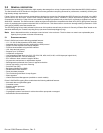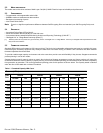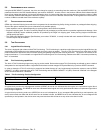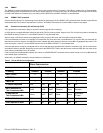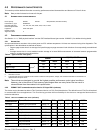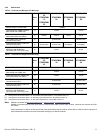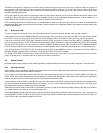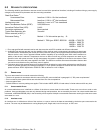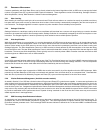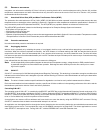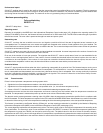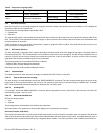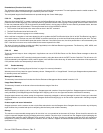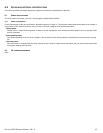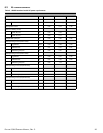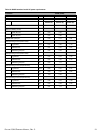PULSAR.2 SAS PRODUCT MANUAL, REV. C 14
5.2 ENDURANCE MANAGEMENT
Customer satisfaction with Solid State Drives can be directly related to the internal algorithms which an SSD uses to manage the limited
number of Program-Erase (PE) cycles that NAND Flash can withstand. These algorithms consist of Wearleveling, Garbage Collection,
Write Amplification, Unmap, Data Retention, Lifetime Endurance Management.
5.2.1 Wear Leveling
Wear Leveling is a technique used by the drive to ensure that all Flash cells are written to or exercised as evenly as possible to avoid any
hot spots where some cells are used up faster than other locations. Wear Leveling is automatically managed by the drive and requires no
user interaction. The Seagate algorithm is tuned to operate only when needed to ensure reliable product operation.
5.2.2 Garbage Collection
Garbage Collection is a technique used by the drive to consolidate valid user data into a common cell range freeing up unused or obsolete
locations to be erased and used for future storage needs. Garbage Collection is automatically managed by the drive and requires no user
interaction. The Seagate algorithm is tuned to operate only when needed to ensure reliable product operation.
5.2.3 Write Amplification
While Write Amplification is not an algorithm, it is a major characteristic of SSD's that must be accounted for by all the algorithms that the
SSD implements. The Write Amplification Factor of an SSD is defined as the ratio of Host/User data requested to be written to the actual
amount of data written by the SSD internal to account for the user data and the housekeeping activities such as Wear Leveling and
Garbage Collection. The Write Amplification Factor of an SSD can also be directly affected by the characteristics of the host data being
sent to the SSD to write. The best Write Amplification Factor is achieved for data that is written in sequential LBA's that are aligned on 4KB
boundaries. The worst case Write Amplification Factor typically occurs for randomly written LBA's of transfer sizes that are less than 4KB
and that originate on LBA's that are not on 4KB boundaries.
5.2.4 UNMAP
A new SCSI command has been added to the SSD as part of the Thin Provisioning feature set. Use of the UNMAP command reduces the
Write Amplification Factor of the drive during housekeeping tasks such as Wear Leveling and Garbage Collection. This is accomplished
because the drive does not need to retain data which has been classified by the host as obsolete.
5.2.5 Data Retention
Data Retention is another major characteristic of SSD's that must be accounted for by all the algorithms that the SSD implements. While
powered up, the Data Retention of SSD cells are monitored and rewritten if the cell levels decay to an unexpected level. Data Retention
when the drive is powered off is affected by Program and Erase (PE) cycles and the temperature of the drive when stored.
5.2.6 Lifetime Endurance Management (Available on select models)
As stated in Section 5.2, an SSD has a limited number of Program and Erase (PE) cycles that are capable. In worse case applications, the
write workload could be such that the drive experiences a high Write Amplification Factor that could lead to potential wear out prior to the
drive achieving it's expected field life. Additionally, the Data Retention spec of the SSD needs to be considered to ensure the spec is met
once the drive is worn out. Seagate has implemented a Lifetime Endurance Management technique which helps OEMS and user to avoid
early wear out. By monitoring the write workload being sent to the drive, the drive can add additional response time to WRITE commands
to provide a sustainable level of performance that is capable of being sustained for the life of the drive. Most users may never see this
added response time in their applications.
5.2.7 SSD Percentage Used Endurance Indicator
An application can interrogate the drive through the host to determine an estimate of the percentage of device life that has been used. To
accomplish this, issue a LOG SENSE command to log page 0x11. This allows applications to read the contents of the Percentage Used
Endurance Indicator parameter code. The Percentage Used Endurance Indicator is defined in the T10 document SBC-3 available from the
T10 committee.



